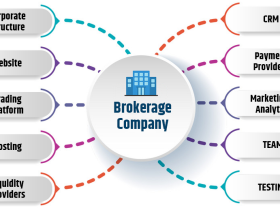
Vatican City’s highest-grossing companies
Vatican City is a unique state, both in size and economy. Unlike other countries, it does not have large corporations or traditional industries. Instead, its economy revolves around religious activities, tourism, donations, and investments. However, there are several key entities that generate significant revenue for the Vatican.
1. The Institute for the Works of Religion (IOR) – The Vatican Bank
The Institute for the Works of Religion (IOR), commonly referred to as the Vatican Bank, is one of the most financially significant entities in Vatican City. Established in 1942, the bank manages assets for the Catholic Church, religious institutions, and charitable organizations. While it does not function as a traditional commercial bank, it holds billions in deposits and investments. The bank’s earnings primarily come from investment returns, banking fees, and financial management services.
2. The Vatican Museums
The Vatican Museums are among the most visited museums in the world, attracting millions of tourists annually. Revenue is generated through entrance fees, guided tours, and sales from museum gift shops. The Sistine Chapel, a key attraction within the museums, draws art lovers and religious pilgrims alike. The Vatican Museums contribute significantly to the city’s economy, with annual earnings reaching hundreds of millions of euros.
3. The Vatican Publishing House (Libreria Editrice Vaticana)
The Vatican Publishing House is responsible for printing and selling Vatican-related publications, including religious books, official documents, and the Pope’s speeches. It also manages the copyrights for Vatican writings, generating revenue through sales, licensing, and partnerships with other publishers worldwide.
4. L’Osservatore Romano – The Vatican Newspaper
Founded in 1861, L’Osservatore Romano is the official newspaper of the Vatican. It provides news and commentary on religious matters, Vatican affairs, and global events. While its circulation is relatively small compared to mainstream newspapers, it earns revenue through subscriptions, advertising, and syndication to Catholic media outlets.
5. The Vatican Post Office (Poste Vaticane)
The Vatican Post Office is a popular service among tourists and collectors. Vatican City issues its own postage stamps, which are highly valued by philatelists. The revenue generated from the sale of stamps, postcards, and postal services contributes to the Vatican’s income.
6. The Vatican Philatelic and Numismatic Office
This office is responsible for issuing Vatican City’s commemorative coins and stamps. Since Vatican coins are highly sought after by collectors, they generate substantial revenue. The Vatican also mints euro coins, which are legal tender within the Eurozone but are primarily sold as collectibles.
7. The Vatican Tourist Services
Apart from museum ticket sales, Vatican City earns significant revenue from guided tours, souvenirs, and religious artifacts sold in various Vatican gift shops. These stores, located near St. Peter’s Basilica and other attractions, offer rosaries, medals, books, and religious items that are popular among visitors.
8. Peter’s Pence – Donations to the Vatican
Although not a company, Peter’s Pence is an important source of Vatican revenue. It is a global collection of donations from Catholic faithful, meant to support the Pope’s charitable efforts. These funds are used for humanitarian aid, Church activities, and Vatican operations.
Conclusion
Unlike conventional economies, Vatican City’s highest-grossing entities are closely linked to religion, tourism, and publishing. The Vatican Bank, Museums, Publishing House, and Philatelic Office are among the biggest revenue contributors. While the Vatican does not have large corporations, these institutions ensure financial stability for the smallest country in the world.




Leave a Reply